Fable Legends Early Preview: DirectX 12 Benchmark Analysis
by Ryan Smith, Ian Cutress & Daniel Williams on September 24, 2015 9:00 AM ESTDiscussing Percentiles and Minimum Frame Rates
Continuing from the previous page, we performed a similar analysis on AMD's Fury X graphics card. Same rules apply - all three resolution/setting combinations using all three system configurations. Results are given as frame rate profiles showing percentiles as well as choosing the 90th, 95th and 99th percentile values to get an indication of minimum frame rates.
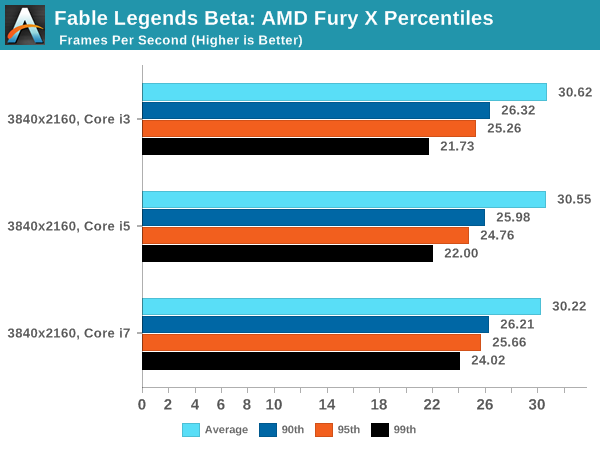
Moving on to the Fury X at 4K and we see all three processor lineups performing similarly, giving us an indication that we are more GPU limited here. There is a slight underline on the Core i7 though, giving slightly lower frame rates in easier scenes but a better frame rate when the going gets tough beyond the 95th percentile.
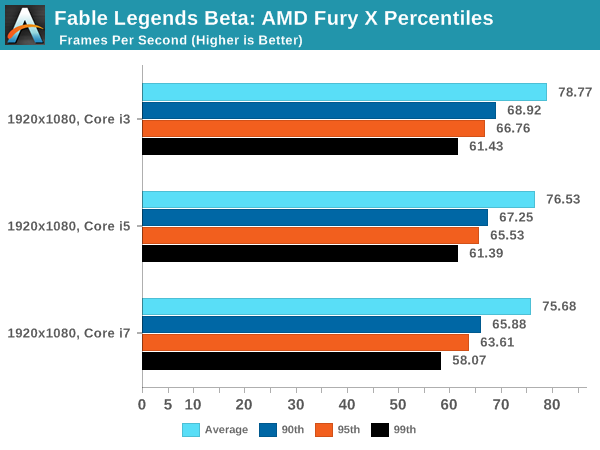
For 1080p, the results take a twist. It almost seems as if we have some form of reverse scaling, whereby more cores is doing more damage to the results. If we have a look at the breakdown provided by the in-game benchmark (given in milliseconds, so lower is better):
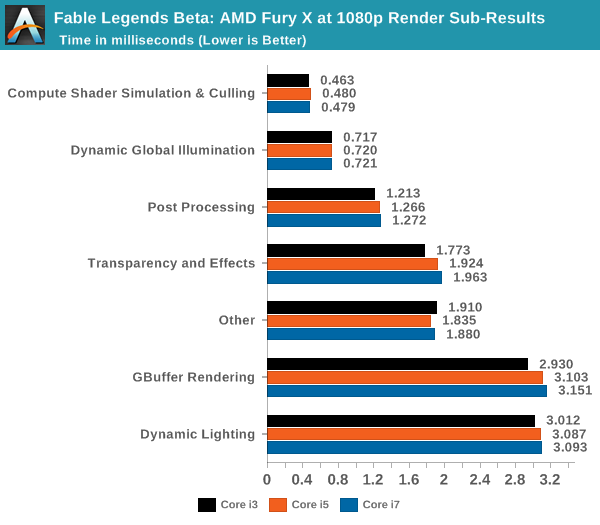
Three areas stand out as benefitting from fewer cores: Transparency and Effects, GBuffer Rendering and Dynamic Lighting. All three are related to illumination and how the illumination interacts with its surroundings. One reason springs to mind on this – with large core counts, too many threads are issuing work to the graphics card causing thread contention in the cache or giving the thread scheduler a hard time depending on what comes in as high priority.
Nevertheless, the situation changes when we move down again to 720p:
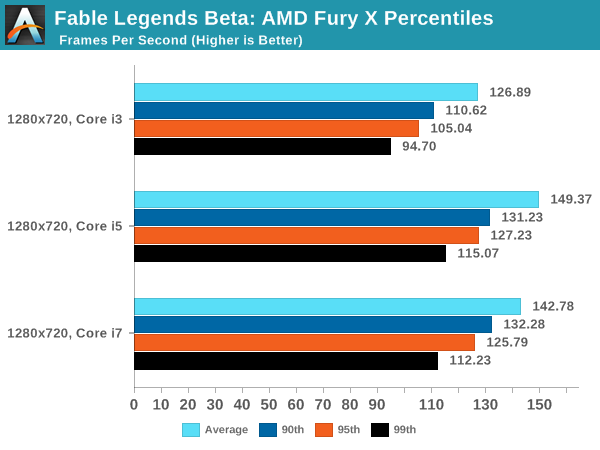
Here the Core i3 takes a nose dive as we become CPU limited to pushing out the frames.


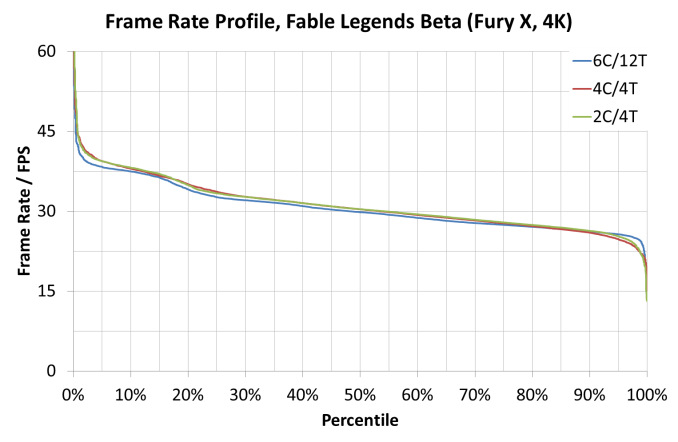
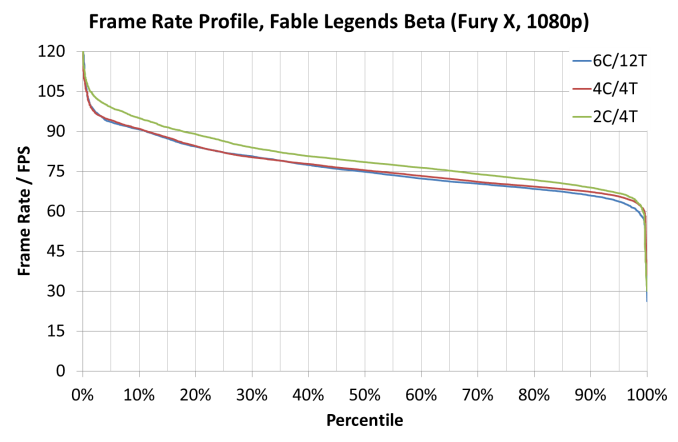
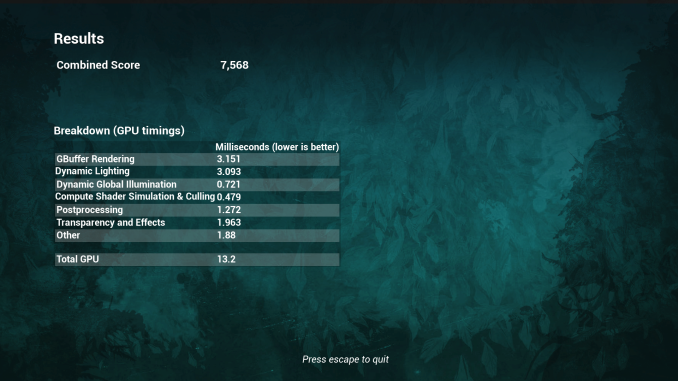
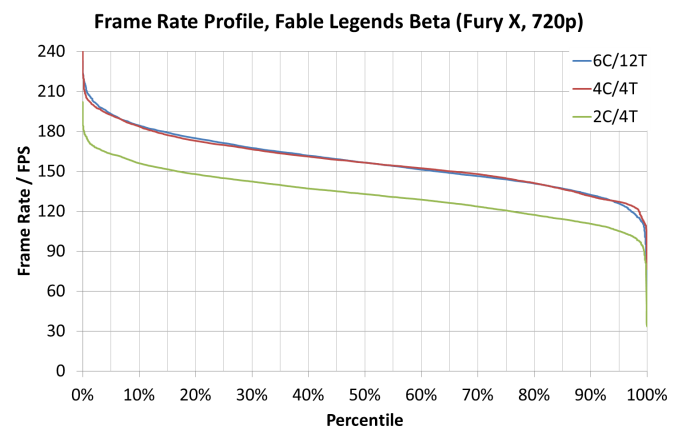








141 Comments
View All Comments
Oxford Guy - Monday, September 28, 2015 - link
"If this trend continues it actually looks like the best processor for gaming might be the Pentium g3580."That's funny since I once suggested that Nintendo use a fast dual core for its upcoming gaming system along with an Nvidia GPU — basically the opposite of the other consoles' many-core slow APU setup. I wonder if a triple core design would really be the optimal chip design for gaming, balancing power consumption with clock speed.
Kerome - Friday, October 2, 2015 - link
Gameplay code is notoriously hard to parallelise, so it's likely to be advantageous to have just a couple of big cores than a bunch of smaller ones. It's interesting to see that Apple has taken exactly this approach with their latest A9 SoC for the iPhone 6S. Although of course the included PowerVR 7XT series GPU doesn't compare to an NVidia desktop solution.Very few applications on mobile come close to maxing out the A8, let alone the A9. It will be interesting to see where they take it.
tec-goblin - Wednesday, September 30, 2015 - link
I am still waiting for the integrated cards benchmarks!Enterprise24 - Thursday, October 1, 2015 - link
What about 780 Ti ?remosito - Friday, October 2, 2015 - link
Are you planning on doing benchmarks with the new 15.9.1 AMD drivers?Powerrush - Saturday, October 3, 2015 - link
http://wccftech.com/asynchronous-compute-investiga...Slash3 - Monday, October 5, 2015 - link
Any download link? I didn't see one in the article, although I'm quite tired and may have missed it.lprates - Thursday, October 15, 2015 - link
Great graphicslprates - Thursday, October 15, 2015 - link
Great graphicslprates - Sunday, October 18, 2015 - link
Great graphics